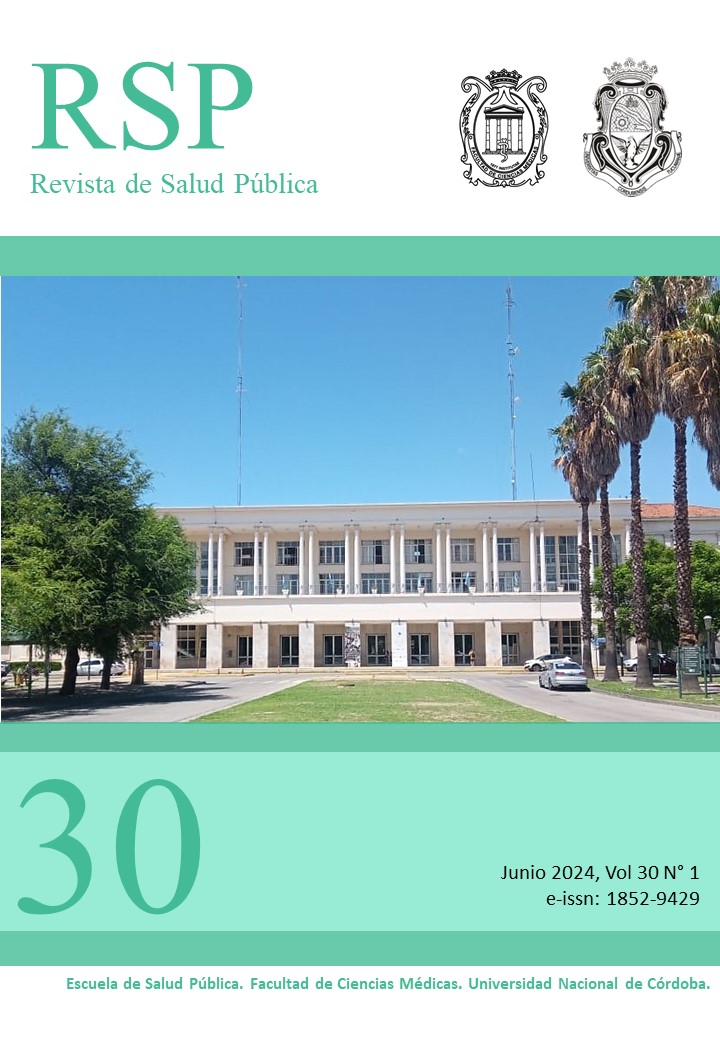Influencia del grado de incomodidad durante lapolisomnografía en el resultado de la prueba
DOI:
https://doi.org/10.31052/1853.1180.v30.n1.40453Palabras clave:
medicina del sueño, polysomnografía, apnea obstructiva del sueño, sueñoResumen
Objetivo: Relacionar el grado de malestar provocado por la polisomnografía (PSG) con el resultado de la prueba.
Métodos: Estudio observacional analítico transversal basado en la PSG realizada en pacientes adultos.
Tras la realización de la PSG, los pacientes completaron un formulario estandarizado con preguntas sobre el grado de
molestias durante el examen. Esta información se dividió en dos grupos según la presencia
o ausencia de apnea obstructiva del sueño (AOS), evidenciada según el resultado de la PSG mediante la medición del
Índice de apnea e hipopnea (IAH). El análisis fue univariante, y se utilizó el test de chi-cuadrado como
medida de asociación para las variables cualitativas y, para las variables no paramétricas, la prueba de Mann-Whitney,
con un intervalo de confianza del 95% (IC 95%) y un valor p significativo inferior a 0,05. Resultados: Se incluyeron 594
pacientes de polisomnografía, con 279 (46,97%) hombres y 315 (53,03%) mujeres. El grupo de 30 a 44,9 años
fue el grupo con mayor número de pacientes (43,43%) y el más obeso (65,16%). El factor que
más molestó a los pacientes fue la presencia de cables durante la exploración. Las variables sobre la latencia del sueño
(p = 0,55*), número de despertares (p = 0,46*), total de horas dormidas (p = 0,98*) y puntuación del sueño (p = 0,36 *)
no mostraron una relación significativa con el diagnóstico de SAOS. El grado de malestar no presentó
una relación significativa con el resultado de la PSG (p = 0,565**). Conclusiones: A pesar de las molestias durante la PSG, este factor no interfiere en el resultado de la prueba en cuanto a la presencia o ausencia de AOS.
Descargas
Referencias
Perceval AH & Meucci RD. Prevalência de alto risco para a síndrome da apneia obstrutiva do sono na população idosa residente na área rural de Rio Grande-RS. Cadernos Saúde Coletiva, 2020; 28:241-250.
Franklin KA, Rehnqvist N, Axelsson S. Obstructive sleep apnea syndrome--diagnosis and treatment. A systematic literature review from SBU. Lakartidningen. 2007;104:2878-2881.
Bustamante GO. Monitorização Polissonográfica – Aspectos Gerais. Medicina (Ribeirao Preto. Online). 2014;39:169.
Duarte R. Métodos Resumidos no Diagnóstico da Apnéia do Sono. Pulmão RJ. 2010;19;78–82.
De Lima KS, de Carvalho TGML, Callegaro CC. Acurácia do Questionário de Berlin para Identificar Apneia Obstrutiva do Sono na Insuficiência Cardíaca Crônica. Revista Contexto & Amp; Saúde. 2021;21:271–279.
Laranjeira CM. Percepção do sono em pacientes submetidos à polissonografia. 2017. 84 f. Dissertação (Mestrado em Ciências da Saúde) - Universidade Federal de Goiás, Goiânia, 2017.
Sakamoto YS, Porto-Sousa F, Salles C. Prevalence of obstructive sleep apnea in shift workers: A systematic review. Ciencia e Saude Coletiva. 2018;23:33381–3392.
Queiroz CGS, Peixoto MEB, Carvalho JDD, Gomes EF. Perfil Clínico-epidemiológico dos Pacientes Submetidos ao Exame de Polissonografia No Hospital Geral De Fortaleza Em 2018. 2018. [Dissertação] - Escola de Saúde Pública do Ceará, [S. l.], 2018.
Alves LDS, Calamita ABP, Calamita Z. Estudo comparativo sobre a prevalência de alergias entre idosos e não idosos. Revista oficial da Associação Brasileira de Alergia e Imunologia ASBAI, [S. l.]. 2015:1-7.
Aráujo RSM. Diagnóstico e tratamento da síndrome da apneia/hipopneia obstrutiva do sono no âmbito da Medicina Dentária. Tese de Doutorado. 2018.
Zalcman Z et al. Relação entre apneia obstrutiva do sono e obesidade: uma revisão sobre aspectos endócrinos, metabólicos e nutricionais. RBONE - Revista Brasileira de Obesidade, Nutrição e Emagrecimento. 2017;11:250-260.
Ferreira MSL, Paiva T, dos Santos JM. Percepção do sono em indivíduos com síndrome de apneia do sono [dissertação]. [Lisboa]: Universidade de Lisboa, Faculdade de Medicina; 2010. Disponível em: https://repositorio.ul.pt/handle/10451/1927.
Descargas
Publicado
Número
Sección
Licencia
Derechos de autor 2024 Universidad Nacional de Córdoba

Esta obra está bajo una licencia internacional Creative Commons Atribución-NoComercial 4.0.
Aquellos autores/as que tengan publicaciones con esta revista, aceptan los términos siguientes:
Se permite la generación de obras derivadas siempre que no se haga con fines comerciales.
Tampoco se puede utilizar la obra original con fines comerciales.
Se permite y recomienda a los autores/as difundir su obra a través de redes sociales profesionales o en su página web, luego del proceso de publicación a los fines de aumentar la visibilidad del su investigación.







